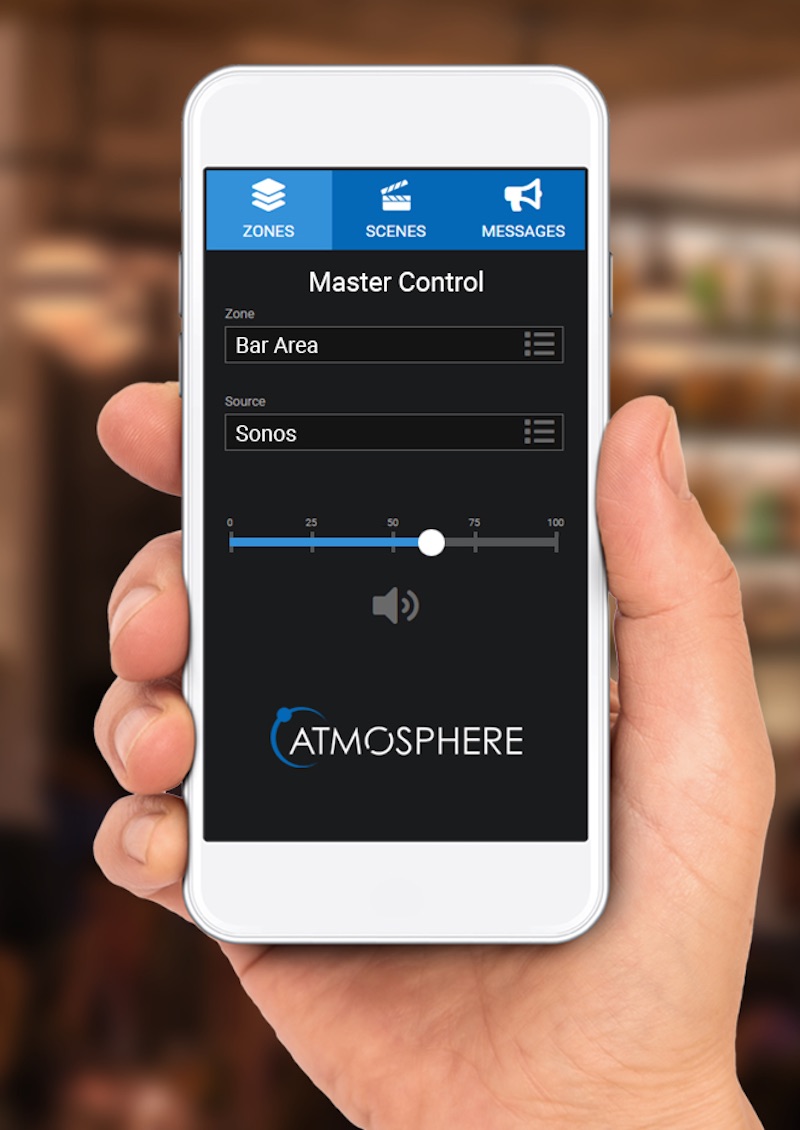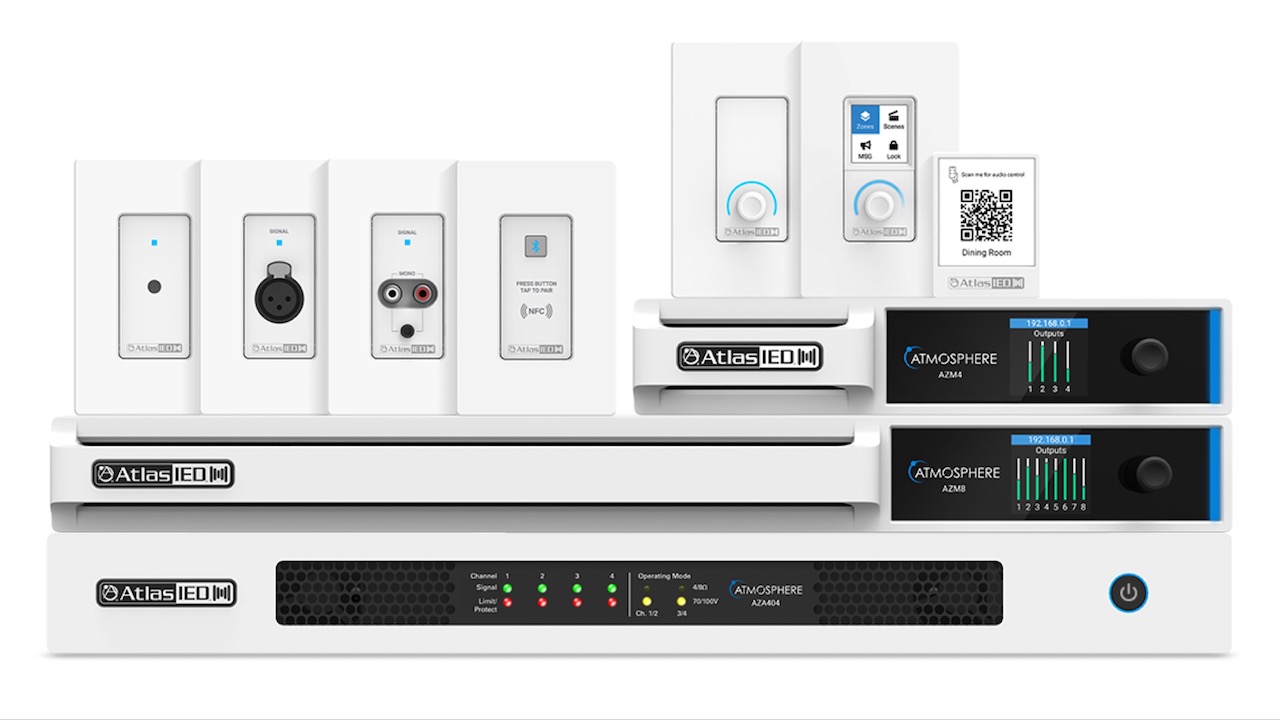Last summer, AtlasIED launched Atmosphere, a digital audio platform comprising an entirely new suite of products and technologies. Under development for two years according to the company, the platform features a combination of digital audio processors, amplifiers, graphical user interfaces, programming software, and controls, and is engineered to enable the utilization of touchless control, automation, and artificial intelligence. The components were designed to work together to minimize training time and installation, configuration, and programming for AV integrators, and to reduce the learning curve for end users. So just how well does it all work?
Setting it Up
I evaluated the Atmosphere platform utilizing the digital audio processor, multi-channel amplifier, and several of the accessories. In terms of design, it is refreshing to see a simplified product offering that meets 90 percent of the multi-zone use cases with only a few models and accessories. The flexibility and features offered at a reasonable price point make the Atmosphere lineup appealing to systems designers. The installation is also simplified for quick turnaround on a jobsite.

At the heart of the system is the digital audio processor. Available in four- or eight-zone configurations, each includes all the necessary features and functions of a modern DSP. The web interface makes setup and system audio equalization a breeze. Preloaded EQ presets for AtlasIED speakers are quick to set up and sound good. The control interface allows for a user-friendly experience. One of the best features of this particular DSP is the ambient noise compensation, which is impressive with its ability to adapt based on a changing environment.
The amplifiers are available in both 400 and 800 watts and have an expandable Dante receiver card that will offer more than the four analog line inputs. The available power allows for versatile configurations of speakers in almost any type of environment.
There are a wide variety of accessories including inputs, control, and monitoring wall plates. These were all easy to set up and allowed for high-quality microphone inputs, accessory RCA input, or even Bluetooth. The Bluetooth had an impressive signal range, although as expected, it worked better on the latest generation iPhone versus an older iPad in our facility. This is based more on the generation of Bluetooth hardware in those specific devices. The ability of operators to quickly control volume and zones on the intuitive wall plate is both user friendly and simple to install.
I like that the DSP features an automated message player that is built in with scheduling ability; however, I did not test this feature. It does add more to this platform, setting it ahead of the competition.
Impressions
My favorite feature is the simple and personal control offered. The ability to control sources, messages, scenes, and more with any smartphone application (iPhone in my specific case) is quick and intuitive. The ability to add user-defined access takes it one step further.
I like the tagline used on the Atmosphere website: “Simple doesn’t have to be basic.” This is a true statement. I found the entire platform to be easy to use, install, and control, while offering a full-featured product line. An interoperable and wholistic system sets the entire Atmosphere platform and product offerings ahead of the competition.
Overall, the platform sets a new standard for digital audio with multi-zone processors, amplifiers, and a variety of accessories. Touchless control, easy-to-program automation, and artificial intelligence offer integrators and users an effortless way to create the perfect Atmosphere for their business. It will be a great tool in any fully featured system design.
Jeremy Caldera, CTS-D, CTS-I is the senior vice president of audiovisual technology at Pearl Technology, is a member of the AVIXA University senior faculty, and a member of the 2021 SCN Hall of Fame.

